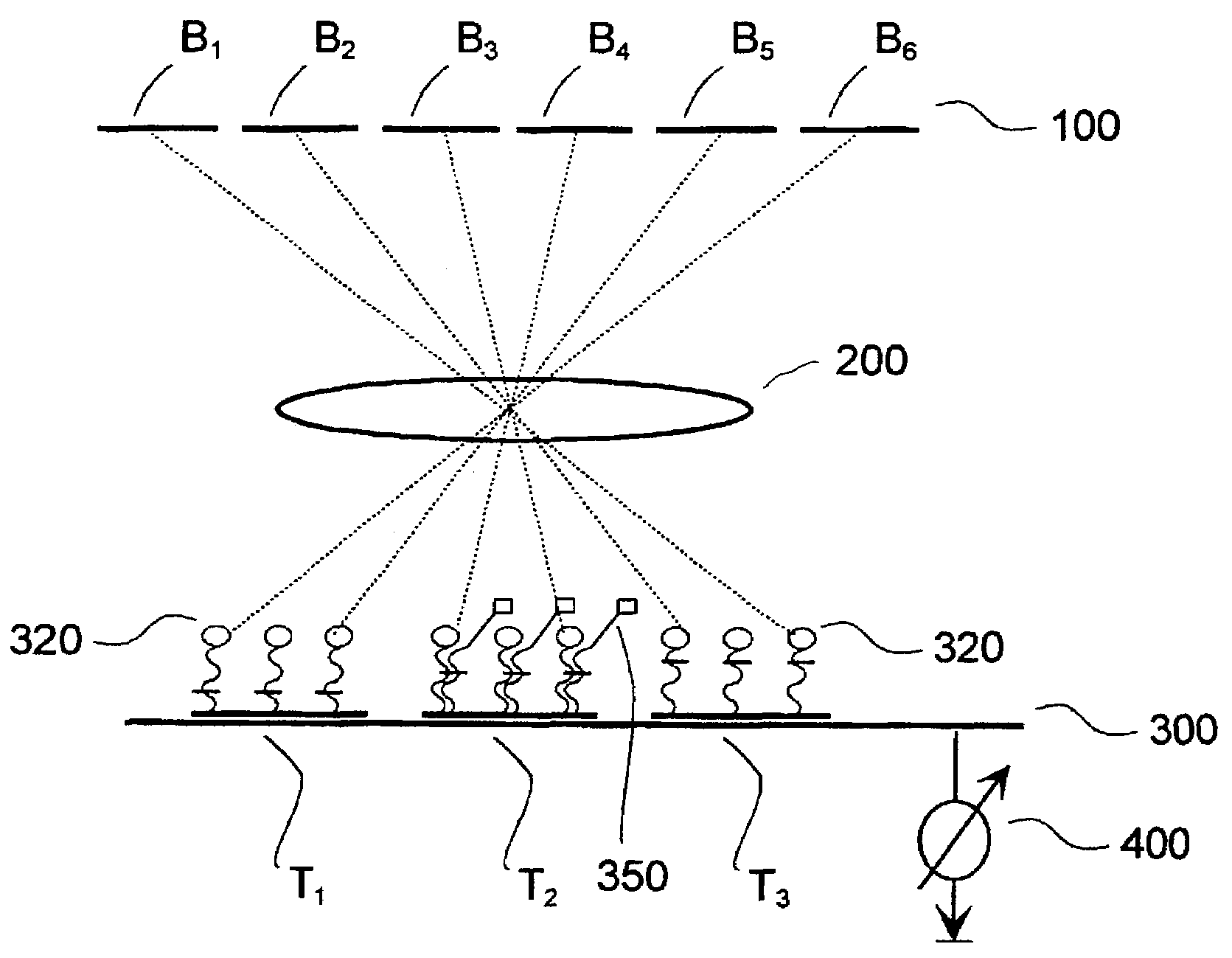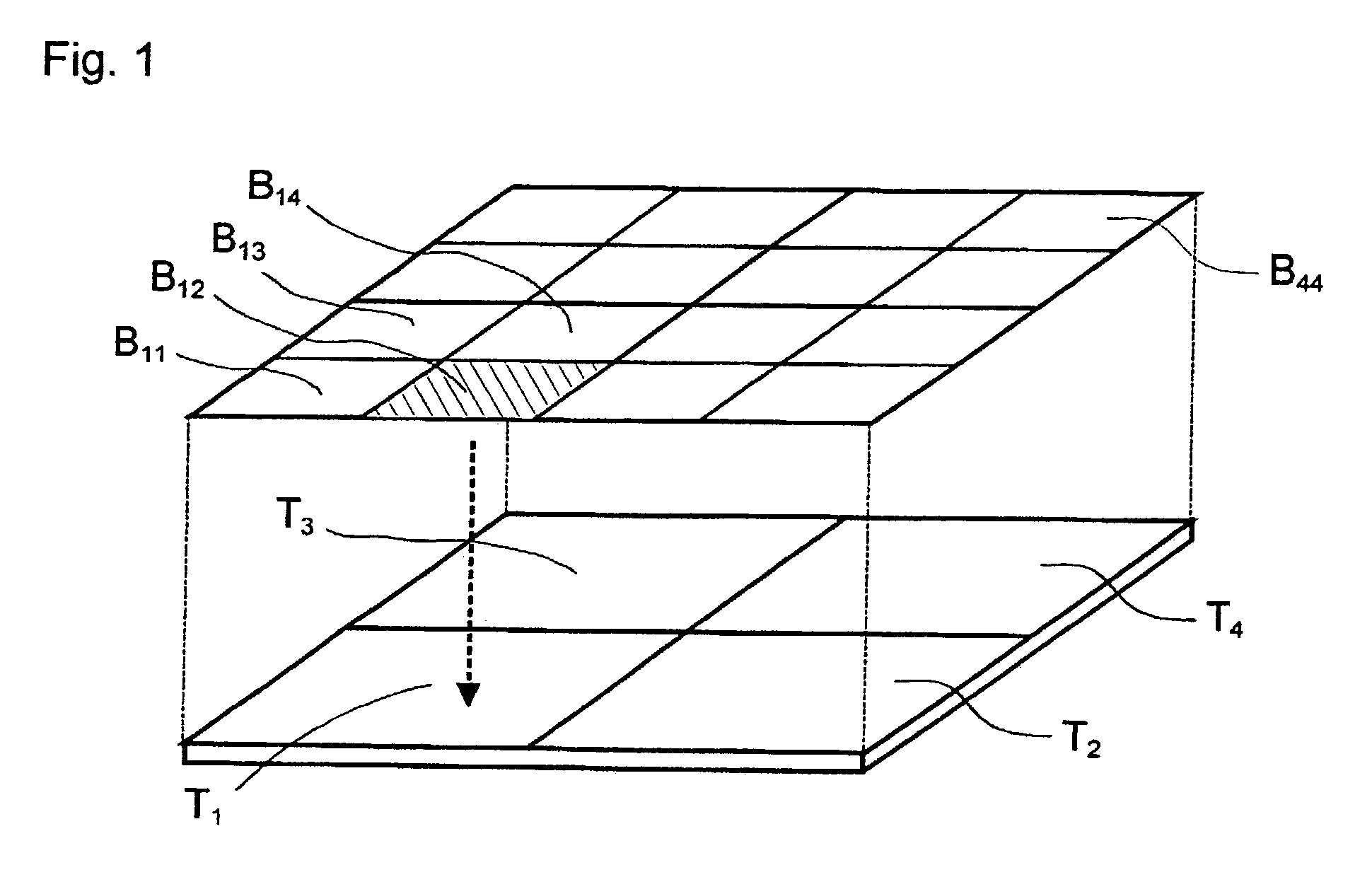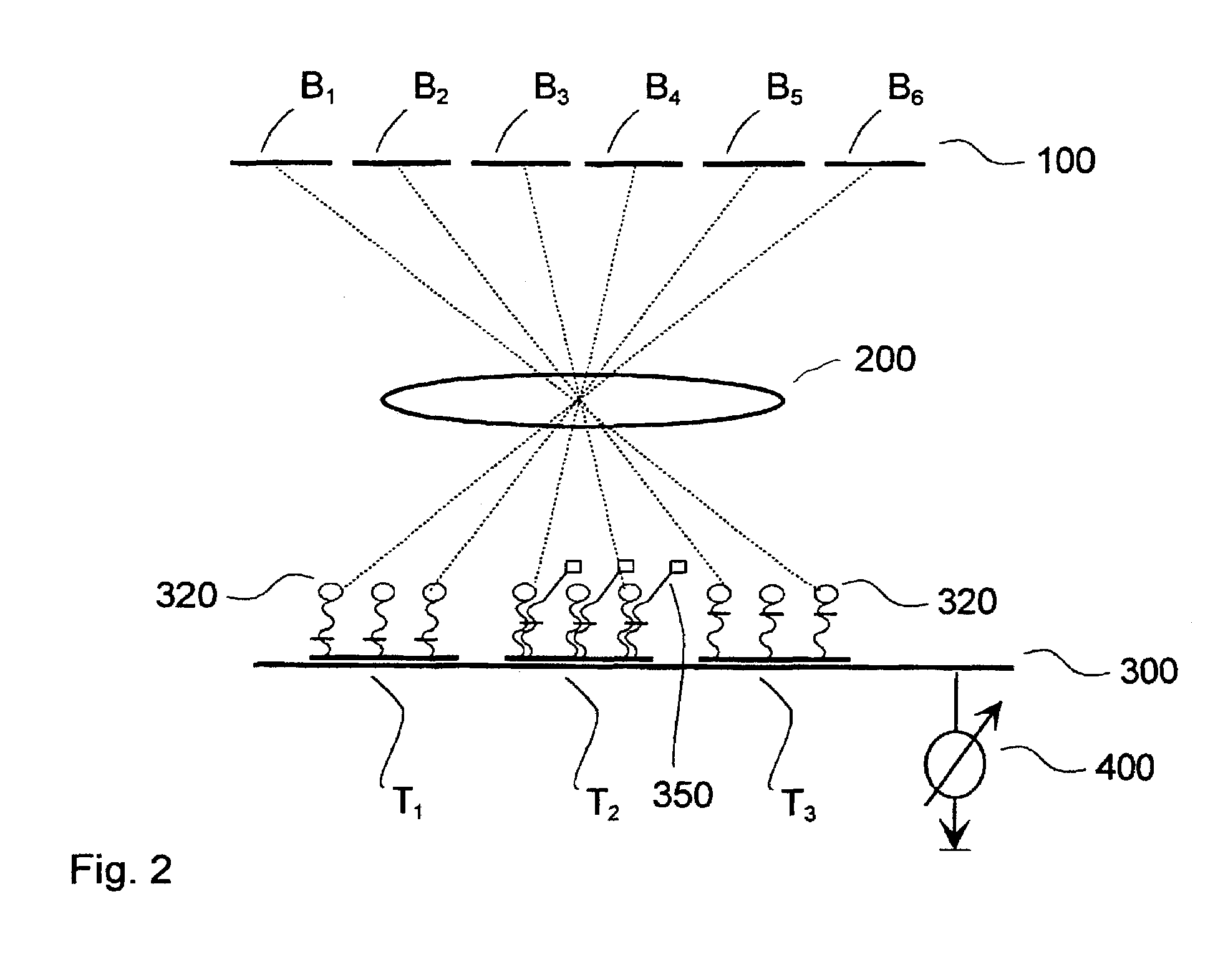Device and method for detecting organic molecules in a test substance
a technology of organic molecules and devices, applied in the field of apparatus and a method for detecting organic molecules, can solve the problems of high cost, mechanical vulnerability, large size, etc., and achieve the effects of improving the regeneration ability of the test system, reducing the measurement time, and increasing the sensitivity
- Summary
- Abstract
- Description
- Claims
- Application Information
AI Technical Summary
Benefits of technology
Problems solved by technology
Method used
Image
Examples
embodiment 1
[0046]FIG. 3 shows schematic diagrams of exemplary embodiments according to the present invention, wherein a liquid crystal display (LCD) is used for the illumination system (Embodiment 1).
[0047]FIGS. 3A to 3C show apparatuses in which, in addition to illumination optics, a projection system is employed (Embodiment 1a).
[0048]FIGS. 3D and 3E show more simply constructed apparatuses with no projection system, in which the biochip is arranged very near the liquid crystal (Embodiment 1b).
[0049]FIG. 3A shows an exemplary embodiment according to the present invention, with LCD, projection system, and electrical detection.
[0050]FIG. 3B shows an exemplary embodiment according to the present invention, with LCD, projection system, and optical detection by means of beam splitters.
[0051]FIG. 3C shows an exemplary embodiment according to the present invention, with LCD, projection system, and optical detection (non-collinear).
[0052]FIG. 3D shows an exemplary embodiment according to the present ...
embodiment 2
[0054]FIG. 4 shows schematic diagrams of exemplary embodiments according to the present invention, wherein a digital micromirror device (DMD) is used for the illumination system (Embodiment 2).
[0055]FIG. 4A shows an exemplary embodiment according to the present invention, with DMD, projection system, and electrical detection.
[0056]FIG. 4B shows an exemplary embodiment according to the present invention, with DMD, projection system, and optical detection by means of beam splitters.
[0057]FIG. 4C shows an exemplary embodiment according to the present invention, with DMD, projection system, and optical detection (non-collinear).
embodiment 3
[0058]FIG. 5 shows schematic diagrams of exemplary embodiments according to the present invention, wherein a video projector is used for the illumination system (Embodiment 3).
[0059]FIG. 5A shows an exemplary embodiment according to the present invention, with video projector, projection system, and electrical detection.
[0060]FIG. 5B shows an exemplary embodiment according to the present invention, with video projector, projection system, and optical detection by means of beam splitters.
[0061]FIG. 5C shows an exemplary embodiment according to the present invention, with video projector, projection system, and optical detection (non-collinear).
PUM
| Property | Measurement | Unit |
|---|---|---|
| threshold frequency | aaaaa | aaaaa |
| threshold frequency | aaaaa | aaaaa |
| threshold frequency | aaaaa | aaaaa |
Abstract
Description
Claims
Application Information
 Login to View More
Login to View More - R&D
- Intellectual Property
- Life Sciences
- Materials
- Tech Scout
- Unparalleled Data Quality
- Higher Quality Content
- 60% Fewer Hallucinations
Browse by: Latest US Patents, China's latest patents, Technical Efficacy Thesaurus, Application Domain, Technology Topic, Popular Technical Reports.
© 2025 PatSnap. All rights reserved.Legal|Privacy policy|Modern Slavery Act Transparency Statement|Sitemap|About US| Contact US: help@patsnap.com



